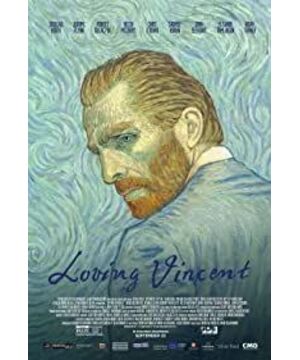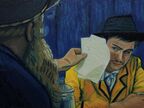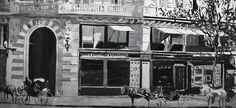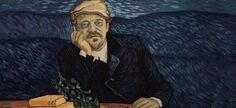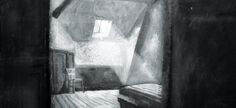Vincent van Gogh himself, many people mentioned that he would always use words such as "crazy" and "warm". Perhaps his work is fiery and intense. However, if you look at some of his letters left in the world, you can see his seriousness. At least in artistic creation, he was as prudent as the Dutch masters of his predecessors. In one article, for example, he mentioned that "he was painting with contrasting colors". At the peak of the development of Impressionism, people's understanding of color has been transformed. Those claws and claws seem wild, but I believe Van Gogh knew very well what he was doing?
Therefore, those who have not read Van Gogh's letters and appreciate his works can sigh "in a ruthless world, living affectionately." And the old bird who is familiar with the routine analyzes the background and makes a long speech. Instead, it's less sincere.
The same goes for watching a movie. It is difficult to get into the play with a little knowledge of the background information. At the end of the film, the little girl in the front row burst into tears. I was indifferent. Objectively speaking, the previous laying out is enough, it is time for tears.
Since emotional incompetence, let's talk about some technical things.
From the perspective of the story, the most tricky point of this film is to find the "Death of Van Gogh" as an entry point. Many people think that Van Gogh was down and out all his life. But in fact, he has been recognized by the mainstream academic circles in the final stage of his life, and perhaps he has not realized what this means. But for such an artist who has just had a solo exhibition and is already promising, why did he choose to end his life when his style has matured and his creative enthusiasm is high? It has been a mystery for a long time!
It begins with the postman exploring the cause of Van Gogh's death, which is basically a structure of peeling an onion. That is, through the narration of different people, flashbacks, and piece together a story. This is the method that has been abused and analyzed after "Citizen Kane". Among them, the flashback part uses black and white (real-life shooting plus post-processing). This part of the picture is several grades weaker than the colored part. The original oil painting that was claimed before was diluted by half, which is a little disappointing. But what to say? It seems reasonable to exist. If the entire film is made of high chroma by Van Gogh, plus the slow rhythm of twelve frames per second, it is estimated that a few will be blinded.
Personally, I think the more heartfelt part is that the film does not use a wide screen. (That is, the screen ratio of narrow strips) You should feel it when you go to the cinema. The sight on both sides is empty, leaving black strips, and the whole picture is narrowed. In this way, the golden ratio of the picture can be met to the greatest extent, and the original work of Van Gogh is not cut. Although it sacrifices part of the viewing experience of the audience. (Subtext: Going to the cinema to watch it is no different from watching it at home. Feelings are optional.)
Aside from feelings, this is probably just a qualified movie. Screenshots are better than viewing. But it seems difficult to put aside feelings and talk about it alone. In any case, it is undeniable that the producer's intentions. Picture color reproduction is excellent.
In Van Gogh's time, photography was becoming widespread. The traditional custom portrait painting is dying. The discovery of the spectrum gave birth to Impressionism. Color becomes a breakthrough in artistic expression. Of course, later photography can also express color, and even video recording is no longer the patent of a few people. Art gradually turned to images, installations, performances, and even ideas.
Today, let the colors of Van Gogh come alive on the screen. It is the modernization of art from the past, and it can be said that it is not new. So even if I didn't move, I still added a star to the private message.
PS: When I was looking for a job, my sister said to me: "Sister, you love art so much, why don't you focus on creating? Just like Van Gogh!" I replied to her; "Van Gogh focused on creating, and his living expenses were all provided by his younger brother. .". . . . . . . . . . . No more then!
View more about Loving Vincent reviews


